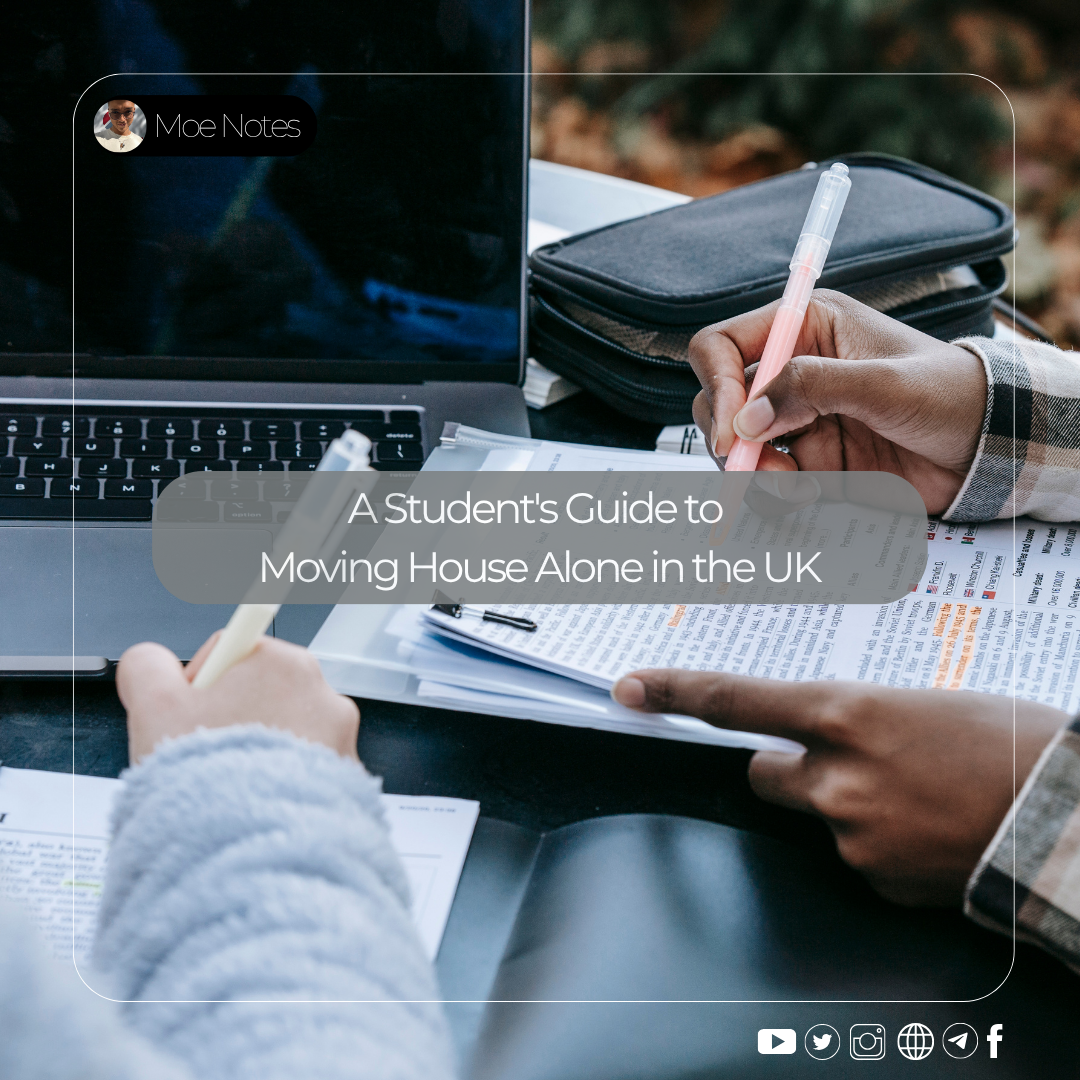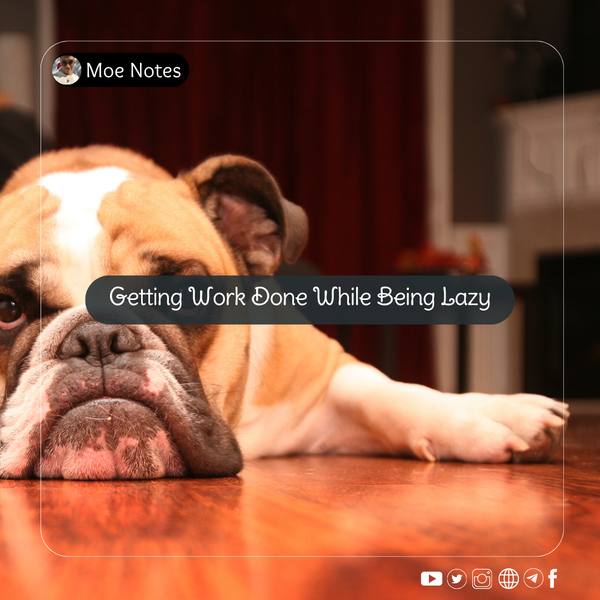A Student's Guide to Moving House Alone in the UK

This article is also available in [Burmese]
"What do I need to move? How much will it cost? Where do I even begin?"
This guide is for students navigating the stressful process of moving house in the UK, especially for those doing it alone for the first time without a network of friends or family to help. It's written from my own experience of wanting to get every single item from one place to another, safely and efficiently, on a student's budget.
A quick note: if you've already been in the UK for a couple of years, you'll likely have your own ways of doing things—from knowing someone with a car, to renting a van yourself, to having a network of friends to call on. This guide is for those who are starting from scratch.
Part 1: The Inventory - You Have More Stuff Than You Think
Even if you've only lived somewhere for a month, you accumulate things. After a year in a student dorm, the amount can be overwhelming. Before you can plan, you need to understand the sheer volume of what you need to move.
The Household List
- Bedding: Duvets, pillows, throw blankets, electric heating blankets, decorative cushions. Don't forget all the covers and sheets. If you bought your own mattress or topper, that's a major item.
- Clothing: This is often the biggest category. An entire wardrobe's worth of clothes, shoes, socks, underwear, and seasonal accessories for the UK's unpredictable weather.
- Comfort Items: Stuffed animals, a phet lone (bolster pillow).
- Skincare & Toiletries: Everything from body lotion and makeup to shampoo, conditioner, hair masks, scrubs, face wash, toothbrushes, and hair dryers.
- General Items: Screwdrivers, extension cords, cleaning sprays, rubbish bags, and all the other small things you've collected.
- Plants & Pots: If you've tried to make your room feel more like home.
The Kitchen List (The Most Complicated Category)
- Cookware: Small pots, a wok, a frying pan.
- Fragile Items: Plates, bowls, glasses, mugs, and various food containers. These need special care.
- Utensils: Spoons, forks, knives, scissors, and other sharp objects.
- Spices & Condiments: Everything from salt, sugar, and chili powder to cooking wine and soy sauce. These can be messy if not sealed properly.
- Dry Goods: Rice, beans, instant noodles, oats, peanut butter, biscuits, and other snacks.
- Appliances: Toaster, rice cooker, blender, deep fryer, etc. These are bulky and heavy.
- Cleaning Supplies: Various chemical sprays, scrubbers, oven cleaner, and floor mopping liquids.
- Large Equipment: Iron, ironing board, vacuum cleaner, mop.
The Academic List (An Architecture Student's Example)
As an architecture student, my academic tools are extensive and expensive to replace. Your major will have its own unique items.
- Model-making tools: From tiny craft knives to saws and cutting machines.
- Materials: Various types of paper, sketchbooks, reference books.
- Valuables: Your laptop, iPad, phone, watch, and any other expensive electronics or personal items.
Part 2: The Strategic Decisions - To Buy, To Pack, or To Throw Away?
Moving brings you face to face with a constant trade-off between convenience, cost, and effort.
The Container Dilemma: The True Cost of 'Cheap' Plastic
You can buy a set of plastic food containers for £1 or £2, but they are often brittle and break easily. A high-quality, reusable container might cost £2-£3 each. A large container for rice, a tall one for spaghetti, an airtight one for oil—it all adds up. I've seen the total cost for proper containers easily exceed £100. This leads to the core moving dilemma:
- Do you spend money on good packing materials to protect your existing cheap items?
- Or do you throw away the cheap items and buy new ones after you move?
In the UK, buying new is almost always more expensive. My advice is to invest in good packing.
Sourcing Your Packing Materials: A Realistic Cost Breakdown
I used Amazon for convenience, but you can find cheaper materials at stores like B&M or Asda if you have the time to look. Here is what I spent on materials alone:
- Bubble Wrap (50cm x 70m roll): £10+ per roll.
- Packing Peanuts (1 cubic foot bag): £7. Essential if you don't want your fragile items to break.
- Cardboard Boxes: £3 - £6 per box. I used over 10 boxes.
- Packing Tape: £3 per roll. I needed about 3 rolls.
- Vacuum Storage Bags (for clothes/bedding): Started at £5 per pack. I spent around £30 in total due to the volume of clothes and some bags breaking.
- Plastic Wrap (300m roll): £13.50.
On top of this, I bought a vacuum sealer and special bags for food, which cost an additional £50. This may seem excessive, but replacing a single broken piece of equipment or dealing with a spilled bottle of soy sauce over everything you own is far more costly and stressful.
Part 3: The Action Plan - My Step-by-Step Moving Process
I had to plan my move while finishing my end-of-semester coursework, so efficiency was key.
- Step 1: The Inventory & Triage. First, I made a rough list of my belongings and estimated how many boxes I would need for each category (e.g., "clothing = 4 boxes," "kitchen = 3 boxes"). Then, I packed the least essential items first. Kitchenware and extra spices can be packed weeks in advance; you can survive on takeout for a while. Bedding and daily essentials are packed last.
- Step 2: Sourcing and Gathering Your Arsenal. Based on my inventory, I ordered all my packing materials at once. I got boxes, tape, bubble wrap, and vacuum bags delivered so I could pack gradually without last-minute panic.
- Step 3: The Move Itself - Choosing a Service. For a single student without a car, you have a few options:
- Ask a Friend: If you have a friend with a car, this is the cheapest option.
- Hire a Taxi/Uber XL: Viable for very short distances and a small number of boxes, but can be stressful.
- Hire a "Man with a Van" Service: This is the most common and effective option. You hire a person with a van for a few hours to help you load, transport, and unload your belongings. Prices vary based on distance, number of floors, and time.
- Use a Luggage Service: Companies like Lovespace are great, but they are priced per box and can become expensive if you have a lot of items.
- Step 4: The Final Check-Out. Before you leave your old room, be meticulous.
- Document Everything: Take photos of the room's condition, especially any pre-existing damage, to ensure you get your deposit back.
- Clean Thoroughly: Leave the room as you found it. A basic cleaning is expected and is a common courtesy.
The Bottom Line: The Real Cost
Between packing materials, hiring a moving service, and other small expenses, my last move, which was only a 20-minute drive across town, cost me around £500. It's a significant expense that every student should budget for.
Moving is a huge hassle, but with a clear plan, it is manageable. If you are unsure, feel free to ask me for advice, from packing materials to finding a service. Good luck!



